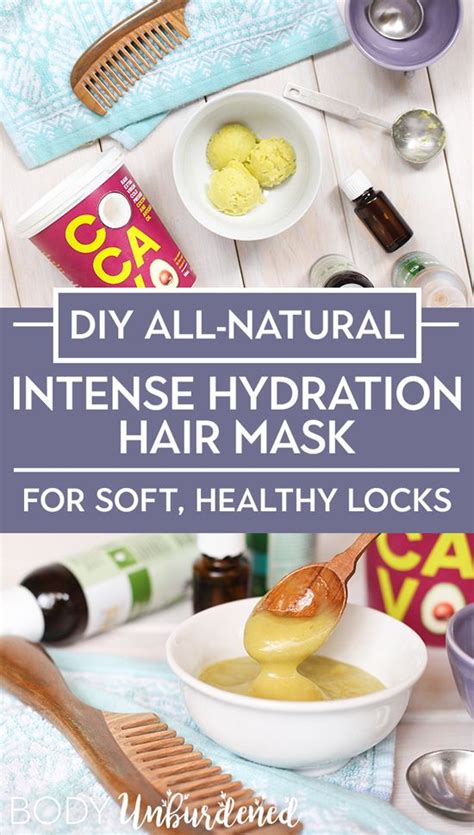Why a Homemade Hair Mask Matters
According to the American Academy of Dermatology, over 50 million Americans experience hair loss or thinning. Lifestyle factors, genetics, and environmental stressors can all contribute to dull, damaged hair.

Homemade hair masks offer a natural and affordable way to nourish and revitalize your hair, providing deep conditioning and protection from external damage. Here are a few benefits of using DIY hair masks:
- Moisturizes: Masks penetrate the hair shaft, delivering hydration and restoring softness.
- Strengthens: Ingredients like honey and yogurt contain proteins that strengthen hair strands, reducing breakage.
- Reduces frizz: Oils and natural humectants smooth and seal the hair cuticle, minimizing frizz and static.
- Promotes growth: Certain ingredients, like fenugreek and castor oil, contain nutrients that stimulate hair growth.
4 Hair Mask Recipes to Try at Home
1. Honey and Yogurt Mask for Dry Hair
- 1/2 cup honey
- 1/4 cup plain yogurt
- 1 tablespoon olive oil
Combine the ingredients in a bowl and mix well. Apply to clean, damp hair and leave on for 15-20 minutes. Rinse thoroughly with warm water.
2. Avocado and Banana Mask for Damaged Hair
- 1 ripe avocado, mashed
- 1 ripe banana, mashed
- 1 tablespoon coconut oil
Blend all the ingredients until smooth. Apply the mask to damp hair and leave on for 20-30 minutes. Rinse thoroughly.
3. Coconut Oil and Amla Mask for Hair Growth
- 2 tablespoons coconut oil
- 3 tablespoons amla powder
- 1 tablespoon lemon juice
Mix the ingredients in a bowl until a smooth paste forms. Apply to the scalp and hair, massaging gently. Leave on for 30 minutes and rinse well.
4. Fenugreek and Castor Oil Mask for Frizz Control
- 1/4 cup fenugreek seeds
- 1/4 cup castor oil
- 1 tablespoon honey
Soak the fenugreek seeds overnight in water. Drain and grind them into a paste. Mix with the castor oil and honey. Apply to dry hair and leave on for 1-2 hours. Rinse thoroughly.
Tips and Tricks for Homemade Hair Masks
- Use fresh ingredients: Natural ingredients are most effective when they’re fresh.
- Tailor the mask to your needs: Choose ingredients that address your specific hair concerns.
- Apply consistently: Use hair masks once or twice a week for best results.
- Leave on for long enough: The longer the mask stays on, the deeper the conditioning.
- Massage the scalp gently: This improves blood circulation and promotes hair growth.
- Rinse thoroughly: Remove all traces of the mask to avoid buildup.
- Try a pre-wash treatment: Apply the mask before shampooing to penetrate deeply.
- Experiment with different combinations: There are countless variations to explore.
Table 1: Hair Mask Ingredients and Benefits
| Ingredient | Benefits |
|---|---|
| Honey | Moisturizes, strengthens |
| Yogurt | Strengthens, reduces frizz |
| Avocado | Nourishes, repairs damage |
| Banana | Moisturizes, softens |
| Coconut oil | Moisturizes, promotes growth |
| Amla | Rich in antioxidants, stimulates growth |
| Fenugreek | Reduces frizz, promotes growth |
| Castor oil | Nourishes, strengthens |
Table 2: Hair Mask Frequency Guide
| Hair Type | Frequency |
|---|---|
| Dry, damaged hair | Weekly |
| Normal hair | Once every two weeks |
| Oily hair | Once every three weeks |
Table 3: Hair Mask Application Techniques
| Technique | Benefits |
|---|---|
| Pre-wash treatment | Deep conditioning |
| Leave-in mask | Prolonged hydration |
| Hot oil mask | Nourishment and repair |
| Overnight mask | Intense conditioning |
Table 4: Hair Mask Troubleshooting
| Problem | Cause | Solution |
|---|---|---|
| Mask too thick | Not enough liquid | Add more liquid gradually |
| Mask too thin | Not enough binding agent | Add a thickening agent like honey or yogurt |
| Mask doesn’t rinse out easily | Ingredients not blended well | Blend the mask thoroughly before applying |
| Mask leaves residue | Ingredients not rinsed out properly | Rinse thoroughly with warm water |
